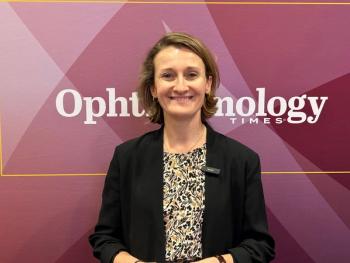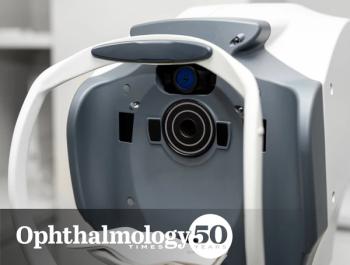
- Ophthalmology Times: October 15, 2020
- Volume 45
- Issue 17
Investigators challenge IOL power calculations
Study finds imaging-based formulas are less accurate in post-myopic LASIK eyes.
This article was reviewed by Neeraj S. Chawla, BS
Novel high-resolution imaging-based
However, findings from a retrospective clinical cohort study of 170 postmyopic LASIK eyes showed that, when comparing IOL power predictive accuracy, the Pentacam Scheimpflug camera-based Potvin-Hill and spectral-domain
Related:
The research was conducted by Neeraj S. Chawla, BS, a medical student at the University of Illinois at Chicago, and Navaneet S. Borisuth, MD, PhD, who is in private practice at Virdi Eye Clinic, with 3 locations in Illinois and Iowa. Chawla presented the findings at the 2020 ASCRS virtual annual meeting.
“Potential limitations of our study included a lack of complete historical LASIK data, as well as sample size,” he said. “Therefore, we believe future studies should continue to explore the Scheimpflug camera-based and OCT-based formulas using larger patient populations [and] tighter experimental conditions, as well as various subgroup analyses.”
Borisuth noted that further investigation may determine the degree and specific conditions in which these imaging-based formulas will improve patient outcomes from cataract surgery.
“The Potvin-Hill and OCT True-K formulas confer a theoretical advantage based on their advanced imaging techniques that incorporate total corneal power,” he said. “For example, the Pentacam rotating Scheimpflug camera may be specifically useful when planning for astigmatic correction in postmyopic LASIK eyes.”
Patients included in the study were operated on by Borisuth, with consideration of post-myopic LASIK eyes receiving monofocal, toric, or extended-depth of focus IOL implants. Eyes with concurrent corneal or retinal pathology were excluded from the study.
Related:
Postoperatively, 81.6% and 91.1% of eyes fell within ± 0.5 D and ± 1.0 D of target predicted refraction, respectively, therefore indicating “generally favorable” surgical outcomes.
IOL power formula predictive accuracy was determined using postoperative refractive data to back-calculate optimum IOL powers and absolute prediction errors.
The formulas analyzed included the Scheimpflug camera-based Potvin-Hill and spectral-domain OCT-based True-K, as well as other conventionally available formulas of the ASCRS IOL calculator. These included the Barrett True-K, Barrett True-K no-history, Masket, Modified Masket, Shammas, Haigis-L, and ASCRS Average formulas.
Mean absolute prediction error ranged from a low of 0.40 ± 0.33 D for the Barrett True-K formula to a high of 0.67 ± 0.51 D for the Shammas formula.
Statistical analyses revealed that the Barrett True-K, ASCRS Average, and Masket formulas were significantly more accurate than the OCT True-K and Shammas formulas only. No other statistically significant differences were derived.
Related:
Additional subanalyses assessed directional relationships between predictive error of the imaging-based formulas with axial length and optimum IOL power.
These analyses found that the accuracy of the Potvin-Hill formula improved with increasing axial length and decreasing optimum IOL power, whereas the OCT True-K formula was most accurate for midrange axial length and midrange optimum IOL power.
“The Potvin-Hill formula typically underpredicted optimum IOL power, [whereas] the OCT-based formula did not show directionality,” Chawla said.
--
Neeraj S. Chawla, BS
e: [email protected]
Chawla has no financial disclosures related to this content. He recently started his thirdyear medical rotations at the University of Illinois in Chicago. He graduated from Emory University in 2018 with a degree in neuroscience and behavioral biology.
Navaneet S. Borisuth, MD, PhD
e: [email protected]
Borisuth has no financial disclosures related to this content. He is a fellow of the American Academy of Ophthalmology, the American Glaucoma Society, and the Society of Heed Fellows.
Articles in this issue
about 5 years ago
Study: Some RP abnormalities are linked with lower visual acuityabout 5 years ago
Teleretinal screening: Effective, less costly option for DRabout 5 years ago
The history of progress and innovation in cataract surgeryabout 5 years ago
ICLs: Investigators finding robust and stable results over long termabout 5 years ago
Exploring four decades of change in retinaabout 5 years ago
Rejuvenation of outflow system: The time has come for procedureabout 5 years ago
Glaucoma 45 years later: Much changed, much unchangedabout 5 years ago
Celebrating a pivotal moment in laser-vision correction historyabout 5 years ago
Deep learning algorithm proven accurate for AMD classificationNewsletter
Don’t miss out—get Ophthalmology Times updates on the latest clinical advancements and expert interviews, straight to your inbox.








































